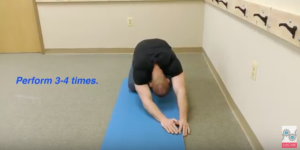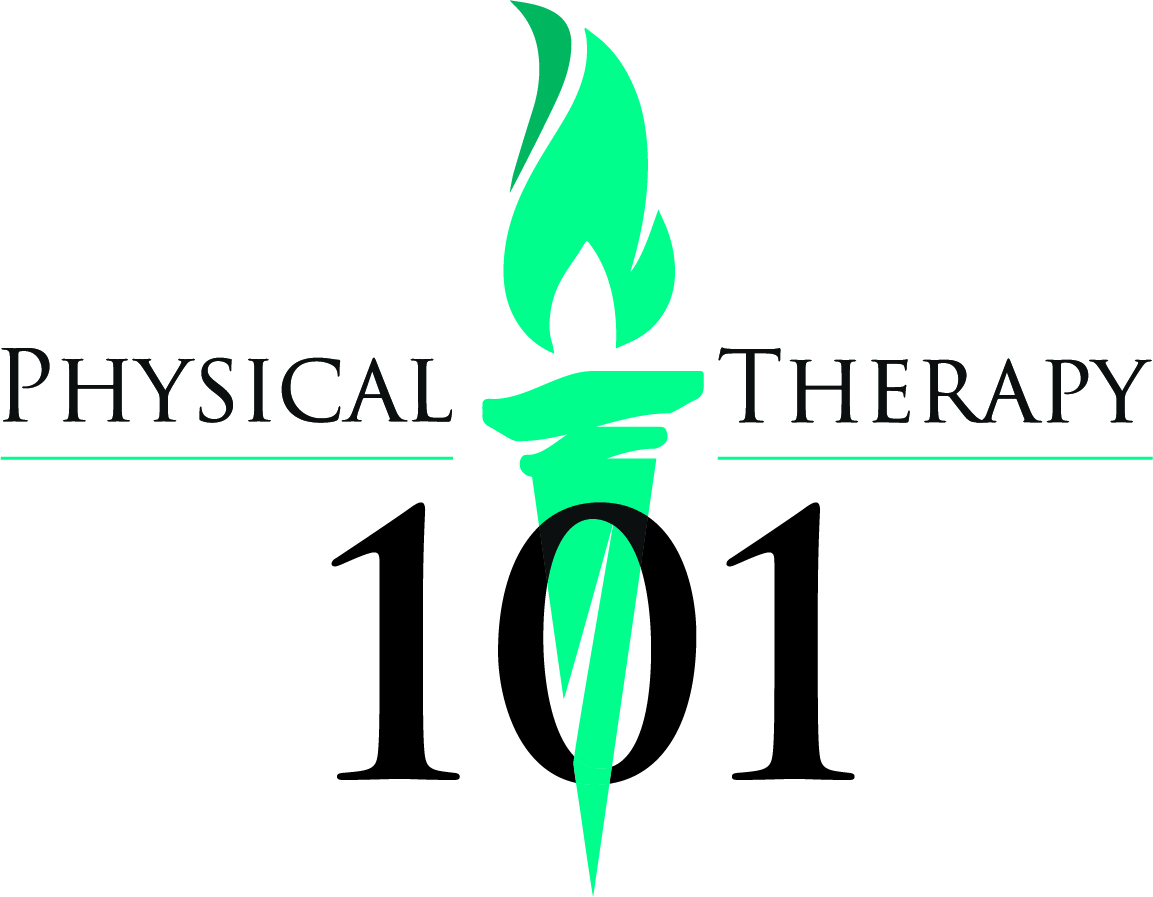Background
The lower back is comprised of an area known as the Lumbar Spine. The Lumbar Spine consists of 5 lumbar vertebrae and discs. Additionally, it is supported with numerous muscles, tendons, and ligaments.
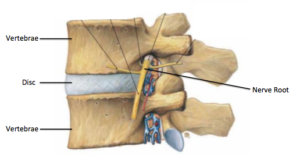
Injuries may occur to numerous anatomical structures in the lumbar area. Injury to the lower back may be due to the following:
- Weakness or tightness to the muscles that support the lower back
- Lifting a heavy object
- Poor body mechanics
- Bad posture
- Obesity
Injury Prevention
For injury prevention, it is sometimes recommended to wear a Lower Back Corset/Brace. It is essential that this applied correctly.
It is also important to do back exercises in order to keep your back strong, stable, and flexible. A healthy lower back supports a person's bodyweight and allows free movement.
First, start by lying on your back; simply pull one knee to your chest. Make sure to keep the opposite foot stable on the floor with your knee bent. Pull the knee to your chest, not over your head. Alternate legs and perform each stretch 3-4 times, holding each for 15-20 seconds.
Single Knee to Chest
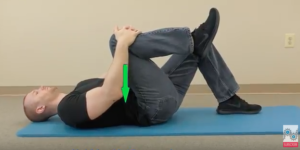
Next, pull both knees to your chest. Like the single knee to chest stretch, you are trying to pull your knees down to your chest, not over your head. Crossing the ankles can be helpful. Perform each stretch 3-4 times, holding each for 15-20 seconds.
Double Knee to Chest
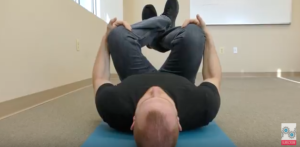
Next, cross one leg over the other. Use one arm to reach through the hole you made to help pull the knee to your chest.
Without Strap - Advanced
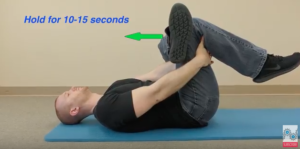
If you are having difficulty, you may use a stretch strap or towel to assist.
With Strap - Beginner
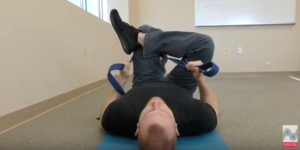
If you would rather do this stretch seated, find a chair and cross one leg onto the other. Stretch by pushing the crossed leg downward, then slightly lean forward keeping your back straight. Perform each stretch 3-4 times, holding each for 15-20 seconds.
Seated
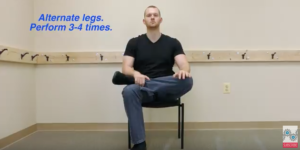
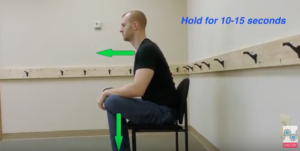
Hamstrings can be stretched by lying on your back. Take a stretch strap or towel and place it around your foot. Use both arms to pull the leg upward. Make sure to keep the opposite foot stable on the floor with the knee bent.
Hamstring Stretch Lying on Back With Strap
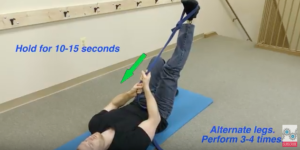
Hamstrings can also be stretched while seated. Place the leg to be stretched on an object and lean your trunk forward. Make sure to keep your knee straight. Play around with different heights until you find the one that works best for you. As the height increases, so will the intensity of the stretch.
Hamstring Stretch Seated - Beginner
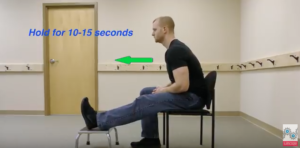
Hamstring Stretch Seated - Advanced
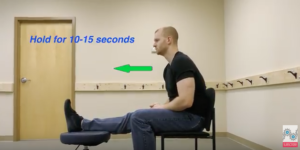
Standing and using a step can work too. Perform each stretch 3-4 times, holding each for 15-20 seconds.
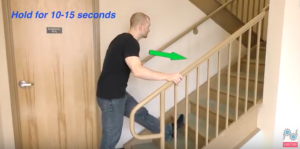
Lower Trunk Rotations can be performed by lying on your back and rotating your knees from side to side. Start off with limited rotation and build up. These can be done back and forth with no pause at the end or you may hold for a few seconds the end.
Lower Trunk Rotations
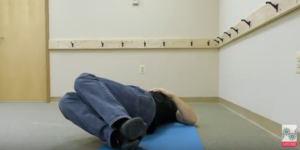
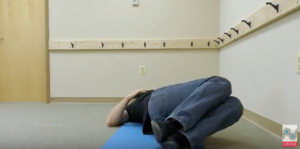
One way to perform a hip flexor stretch is to get into a kneeling position. Shift your body forward. You should feel the stretch in the top front part of the leg that you are kneeling on. Be sure to keep your back straight up and down when performing this stretch. Alternate legs and perform each stretch 3-4 times, holding each for 15-20 seconds. Holding onto the wall or a stable object will help you stay balanced.
Kneeling Hip Flexor Stretch
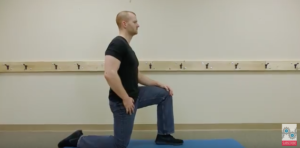
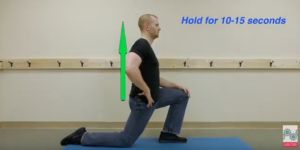
Prayer stretch should be done from a kneeling position as well. Sit your backside on the back of your legs, bend forward and walk your hands out. Try to push your chest to your knees.
Prayer Stretch
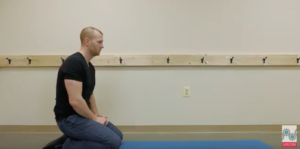
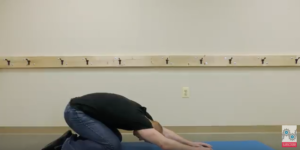
After you have reached out as far as you can, walk your arms from one side to the other. Perform each stretch 3-4 times, holding each for 15-20 seconds.
